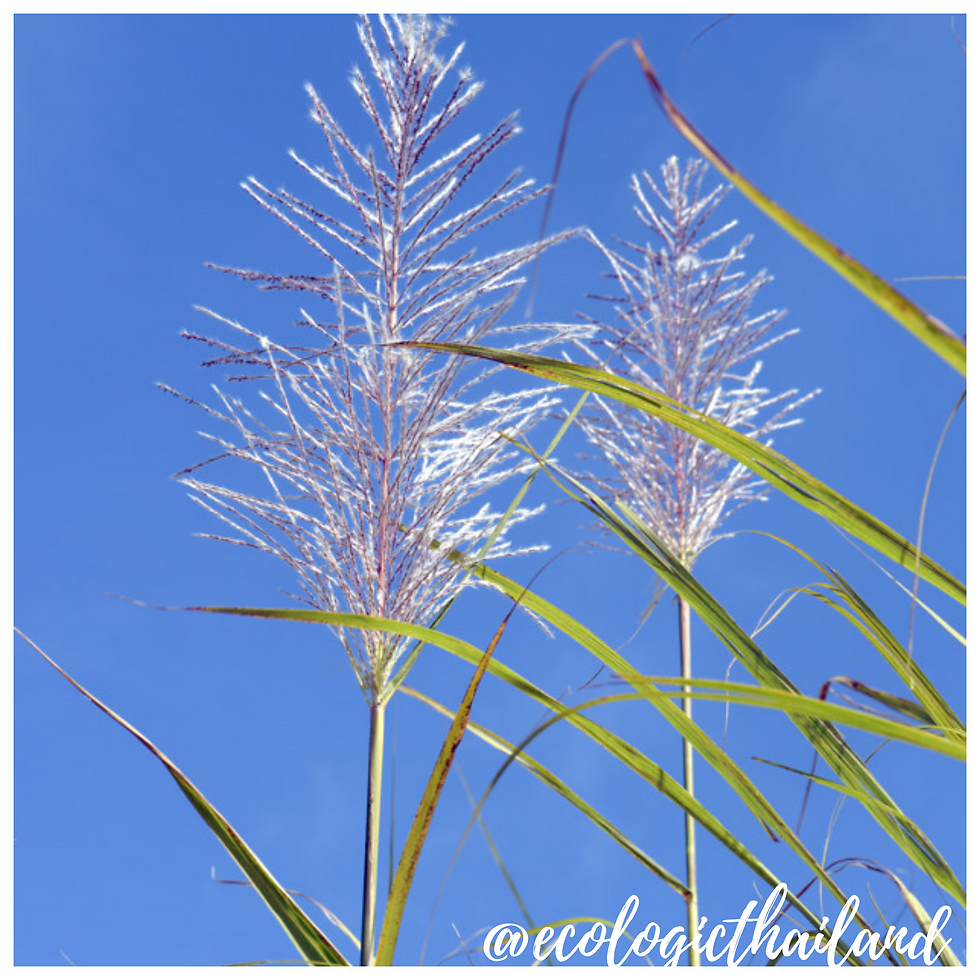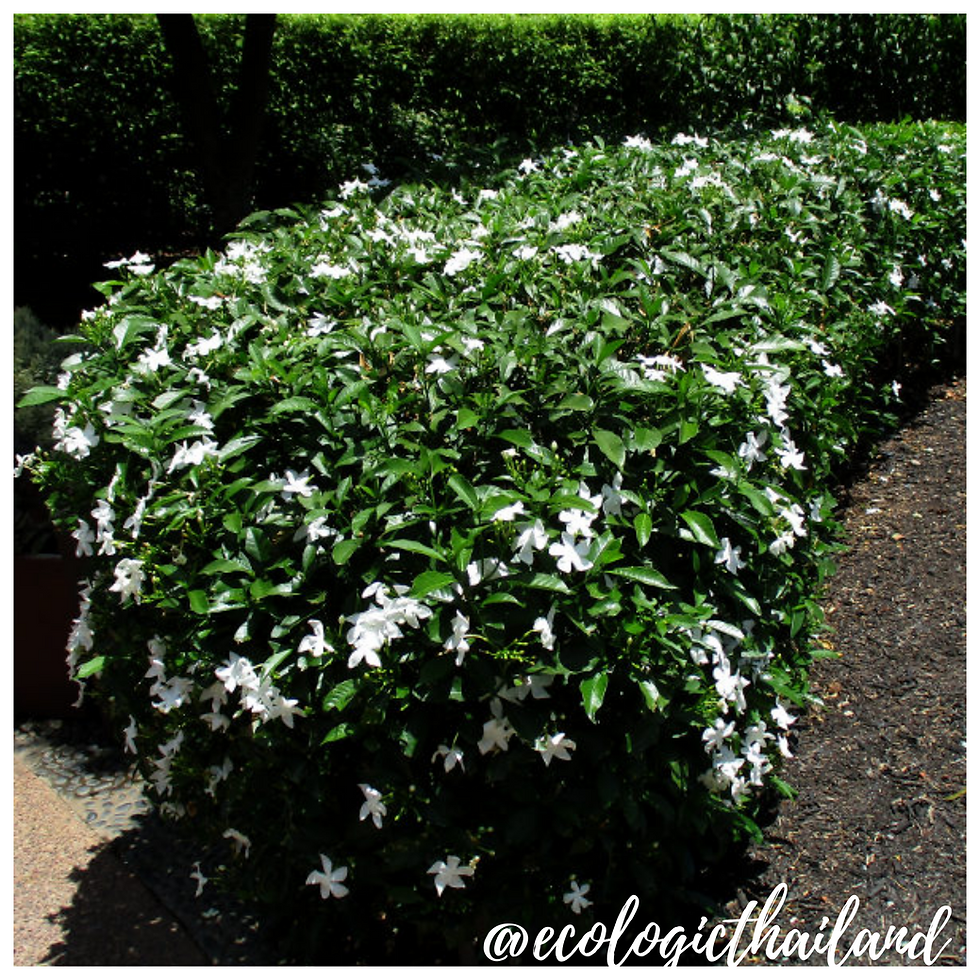Sugarcane
- Eco-Logic Resort
- Mar 12, 2021
- 3 min read
Oi | อ้อย | Saccharum officinarum
Family: Poaceae - Genus: Saccharum

The sugarcane is not popular in Paksong, but you will see clumps of the plant near some houses here.
Sugarcane a large, strong-growing species of grass. Its stout stalks are rich in sucrose, a simple sugar which accumulates in the stalk internodes. It is a perennial plant, that grows in clumps consisting of a number of strong unbranched stems. A network of rhizomes forms under the soil which sends up secondary shoots near the parent plant. The stems vary in color, being green, pinkish, or purple and can reach 5 meter in height.
They are jointed, nodes being present at the bases of the alternate leaves. The internodes contain a fibrous white pith immersed in sugary sap.
Sugarcane juice is a popular drink on Thai markets and the sugar is used for cooking.
Sugarcane is harvested from November to March in Thailand.

THE PLANT
Sugarcane, a perennial grass, is primarily cultivated for its juice from which sugar is processed.
The plant can grow up to 5 meter in height.
Most of the world’s sugarcane is grown in subtropical and tropical areas. The plant is also grown for biofuel production, especially in Brazil, as the canes can be used directly to produce ethyl alcohol (ethanol). The by-products from cane sugar processing, namely the straw and bagasse (cane fibers), can be used to produce cellulosic ethanol, a second-generation biofuel. Other sugarcane products include molasses, rum, and cachaça (a Brazilian alcohol), and the plant itself can be used as thatch and as livestock fodder.

THE LEAVES
The elongated, linear, green leaves have thick midribs and saw-toothed edges and grow to a length of about 30 to 60 centimeter and width of 5 centimeter.

THE FLOWERS
The flowering form of the sugarcane is a panicle up to 60 centimeter long, a pinkish plume that is broadest at the base and tapering towards the top. The spikelets are borne on side branches and are about 3 mm long and are concealed in tufts of long, silky hair. The fruits are dry and each one contains a single seed. Sugarcane harvest typically occurs before the plants flower, as the flowering process causes a reduction in sugar content.
CULINARY USES
Cane sugar is grown for the production of sugar, ethanol, and other industrial uses.
In Thailand sugarcane sugar is used in regular cooking and of course to make sweets.
Click on the link of the Food Forest Kitchen Restaurant to find some delicious recipes of desserts, using sugarcane sugar.
NUTRITION
Sugarcane sugar is loaded with vitamins and minerals such as calcium, potassium, magnesium, manganese, and iron; along with a complete profile of essential amino-acids that help burn fat and build muscle.
TRADITIONAL MEDICINAL USE
NOTE: please take advice from a doctor if you are planning to use herbal medicine.
One of the most important health benefits of sugarcane juice is that it is a diuretic which means that it helps treat urinary tract infections, kidney stones and ensure proper functioning of the kidneys.
It is said that the juice of sugarcane helps strengthen your liver and is thus suggested as a remedy for jaundice.
Sugarcane juice exhibits laxative properties thereby improving bowel movement and relieving constipation. Sugarcane juice also has alkaline properties which means it's good for treating acidity and stomach burns.
Sugarcane juice is rich in minerals which helps prevent tooth decay and bad breath.
INTO THE WILD: a down to earth experience

For guests and visitors to Paksong we organize weekly tours "The Edible Forest" and Foraging weekends: Into the Wild. We work with local guides to take you in the jungle of Paksong. After foraging, we will cook a meal with the ingredients, using bamboo together with you!
Come and join and learn about the abundance of food that nature gives us!
INTO THE WILD!


















Comments